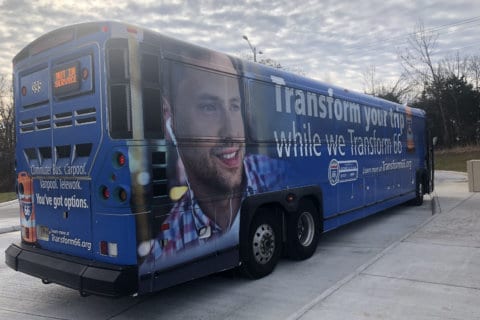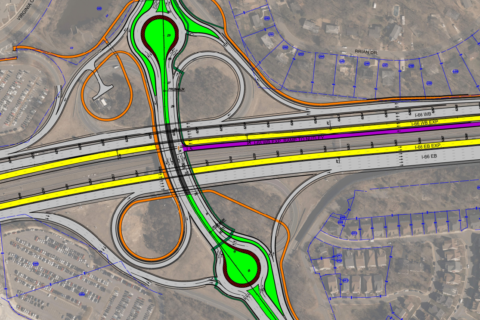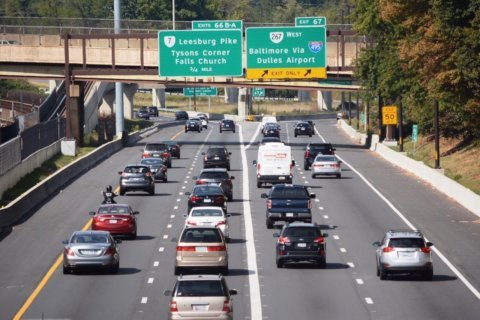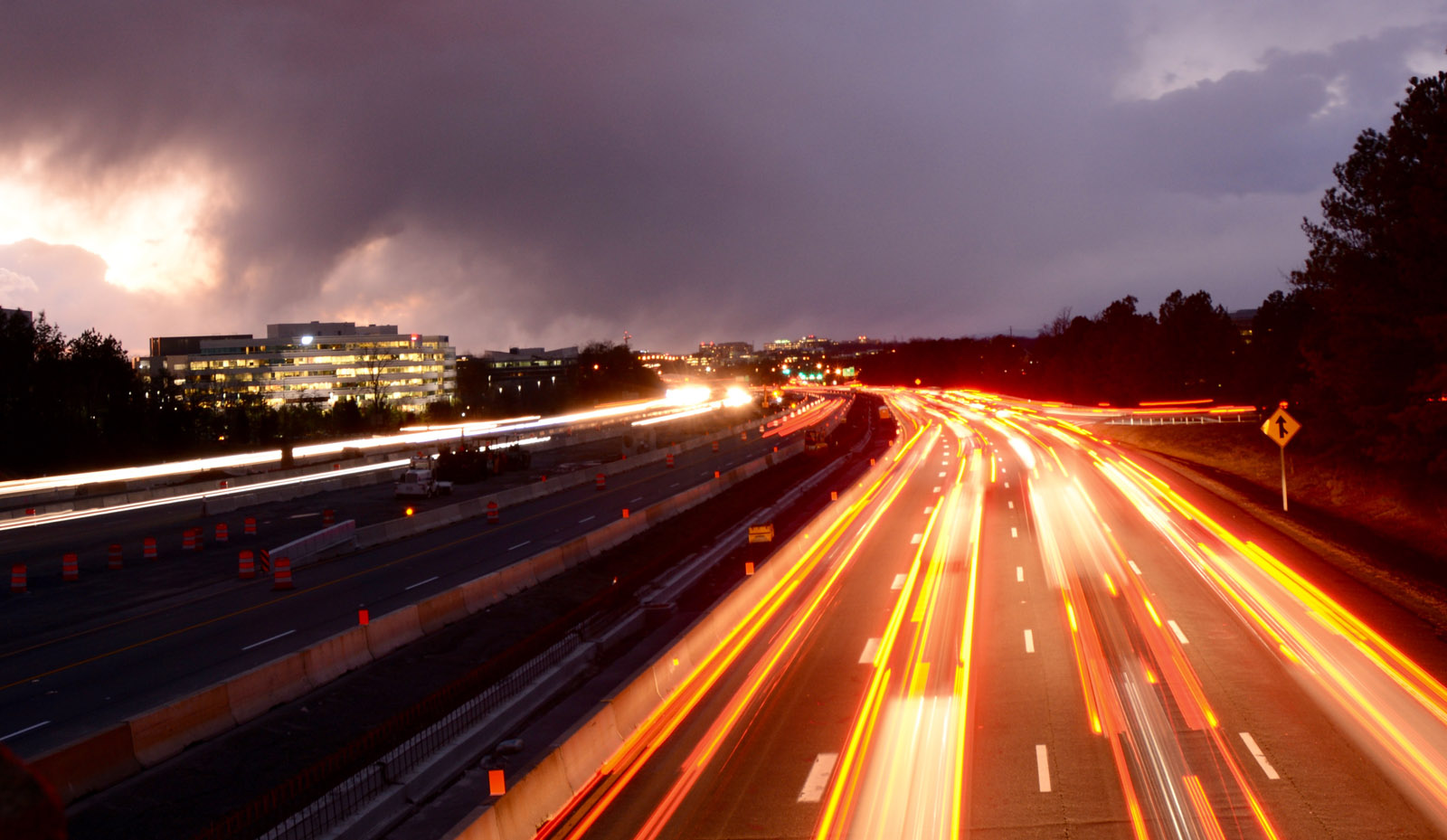WASHINGTON — Driving alone each way at rush hour on Interstate 66 inside the Beltway during newly expanded HOV hours cost an average of $12.59 in the first year of tolls for solo drivers, a policy Virginia transportation officials say helped move more people through the congested corridor.
In December 2017, the HOV hours were expanded eastbound to 5 a.m. to 9 a.m. and westbound to 3 p.m. to 7 p.m. and a new toll was added for solo drivers who previously were generally not allowed to use the road eastbound between 6:30 a.m. and 9 a.m. or westbound between 4:30 p.m. and 6 p.m.
Since the change, an average of 13,946 vehicles with at least two total people inside and an E-ZPass Flex in HOV mode have used the road each day during the expanded hours and an average of 18,279 vehicles pay a toll each weekday, a Department of Transportation review of the first year with the new rules said.
Those toll paying numbers include drivers using the road without an E-ZPass, who can face steep bills and penalties if bills sent through the mail are not paid.
Extrapolating from the HOV data, bus ridership numbers from the first half of 2018, and assuming all toll payers were driving alone, Deputy Transportation Secretary Nick Donohue said 52.8 percent of people using the road are in carpools, 12.6 percent are on buses, and 34.6 percent are paying tolls.
“Almost two-thirds of the daily users are able to use the facility for free,” Donohue said.
“We’re going to always look at ways to improve it, but to date we’re seeing the results we were hoping to see,” he added.
The carpool requirement for a free ride is due to jump from two people including the driver to three people including the driver when toll lanes outside the Beltway open in 2022.
So far, the number of people with an E-ZPass Flex in HOV mode to indicate they are a carpool qualifying for a free ride has increased about 15 percent compared to the first months of tolling.
“There is a number of cheaters …. however the boost we’ve seen in carpooling is much greater than the potential number of cheaters,” Donohue said.
On Nov. 30, when Virginia State Police publicized extra enforcement of HOV or toll rules, the number of carpools dropped by 397 compared to similar days. Police wrote 32 HOV citations to people driving alone with an E-ZPass Flex in HOV mode, up from an average of 2.5 on other similar days.
Traffic and tolling patterns change significantly based on the day of the week, but the average morning toll for all tolled days is now $8.02.
The average afternoon toll is $4.57.
“0.13% of all toll payers chose to pay more than $40 during the first year,” the presentation said, all between 8 a.m. and 9 a.m.
VDOT continues to test changes to the tolling algorithm, and tolls could change significantly when an eastbound widening project between the Dulles Connector Road and Ballston is completed in 2020.
For now, the toll tweaks have lowered tolls somewhat compared to the previous calculations between 6:45 a.m. and 7:45 a.m.
“At the height of rush hour there’s very little we can do because the road is just basically at capacity and there’s so many HOV vehicles at that time,” Donohue said.
In the morning, 48.6 percent of eastbound vehicle trips are HOV, a number that jumps to around 63 percent between 7:30 and 8:30 a.m.
In the afternoon, when tolls are lower and commutes more spread out, about 38.1 percent of westbound trips are HOV.
The year-in-review was presented Friday to the Joint Commission on Transportation Accountability in Richmond.
The state had last released a monthly report on average tolls for August, and had declined to release follow up reports, despite repeated requests from WTOP over the last several months.
Speeds
The expanded HOV hours, rather than the tolls, appeared to have the most significant impact on increasing speeds on Interstate 66.
While average eastbound speeds increased between 5:30 a.m. and 7 a.m., average travel speeds for the length of the corridor were about the same as before between 7 a.m. and 9 a.m. There are still some slowdowns between 8 a.m. and 9 a.m. near the Beltway and Sycamore Street.
In the afternoon, travel westbound is faster on average than before outside of previous HOV hours, but about the same as before between 4:45 p.m. and 6:30 p.m.
There are some specific stretches where the changes have moved or limited slowdowns, with traffic from the Dulles Connector Road to Sycamore Street faster than before from about 8 a.m. to 10 a.m.
Counting all of the expanded hours, morning travel speeds rose 12.2 percent on Interstate 66. Parallel roads range from slightly slower to 10 percent faster overall, with changes for specific commutes varying based on the time of the morning.
In the afternoon, I-66 speeds rose 19.2 percent when including the expanded hours with 3 to 7.5 percent increases on parallel roads over the entire period.
With fewer backups, there was also a decline in crashes on Interstate 66 inside the Beltway.








